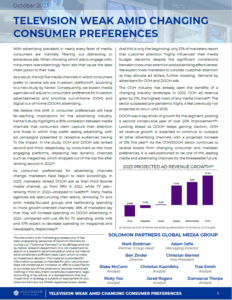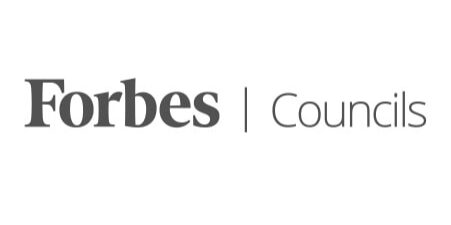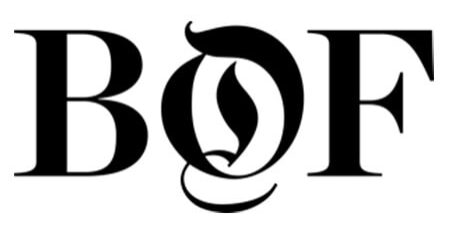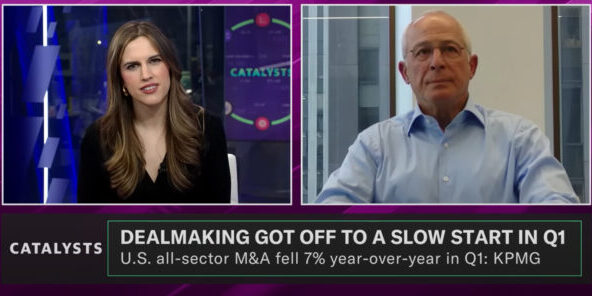Television Weak Amid Changing Consumer Preferences
 Television Weak Amid Changing Consumer Preferences
Television Weak Amid Changing Consumer Preferences
With advertising prevalent in nearly every facet of media, consumers are mentally filtering out distracting or extraneous ads. When choosing which ads to engage with, consumers overwhelmingly favor ads that cause the least interruption to their lives.
As a result, the top five media channels in which consumers prefer to receive ads are in-person platforms (a), according to a new study by Kantar. Consequently, we expect media agencies will adjust to consumers’ preference for in-person advertisements and prioritize out-of-home (OOH) and digital out-of-home (DOOH) advertising.
We believe this shift in consumer preferences will have far-reaching implications for the advertising industry. Kantar’s study highlights a 90% correlation between media channels that consumers claim capture their attention and those in which they prefer seeing advertising, with ad campaigns presented to receptive audiences having 7x the impact. In the study, OOH and DOOH ads ranked second and third, respectively, by consumers as the most engaging platforms, displacing less dynamic channels such as magazines, which dropped out of the top five after ranking second in 2022 (a).
As consumer preferences for advertising channels change, marketers have begun to react accordingly. In 2023, marketers ranked DOOH ads as their third favorite media channel, up from fifth in 2022, while TV ads— ranking third in 2022—dropped to twelfth (a). Many media agencies are restructuring their teams, removing TV and print media-focused groups and reallocating spending to more growth-oriented channels; 46% of marketers say that they will increase spending on DOOH advertising in 2024, compared with just 6% for TV spending, while 44% and 47% expect to decrease spending on magazines and newspapers, respectively (a).
And this is only the beginning: only 51% of marketers report that customer attention “highly influences” their media budget decisions despite the significant correlations between consumer attention and advertising effectiveness. We expect more marketers to consider customer attention as they allocate ad dollars, further boosting demand by advertisers for OOH and DOOH ads.
The OOH industry has already seen the benefits of a changing industry landscape. In 2022, OOH ad revenue grew by 21%, the highest mark of any media channel(b). The sector surpassed pre-pandemic highs, a feat previously not projected to occur until 2025.
DOOH was a key driver of growth for the segment, posting a second consecutive year of over 20% improvement (b). Looking ahead as DOOH keeps gaining traction, OOH ad revenue growth is expected to continue to outpace all other advertising channels, with a projected increase of 13% this year (c). As the OOH/DOOH sector continues to receive boosts from changing consumer and marketer preferences, it is well-positioned to be one of the leading media and advertising channels for the foreseeable future.
Click below to read the article from the Media Group.
a) Kantar; b) Out of Home Advertising Association of America; c) GroupM.





